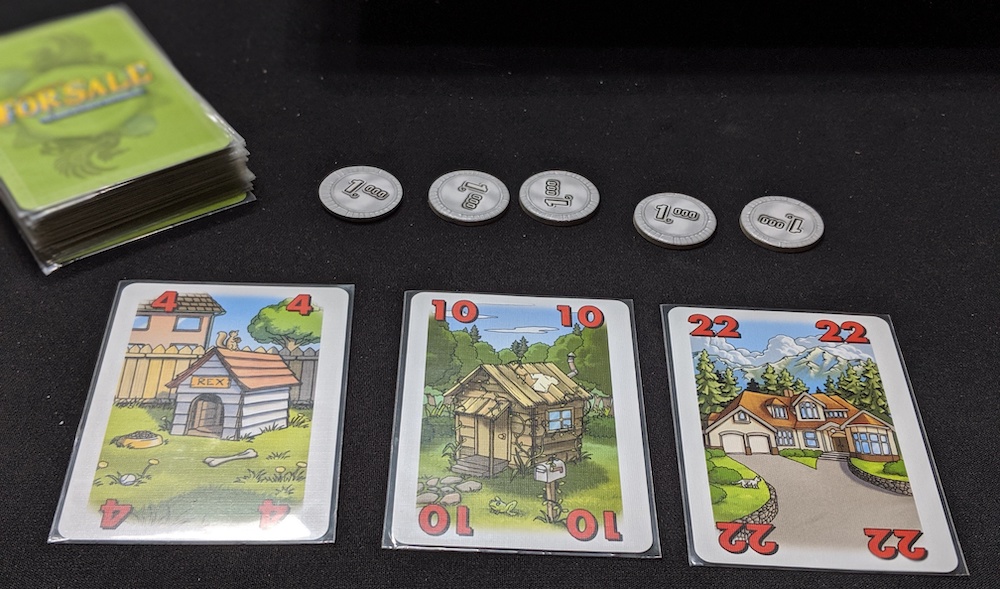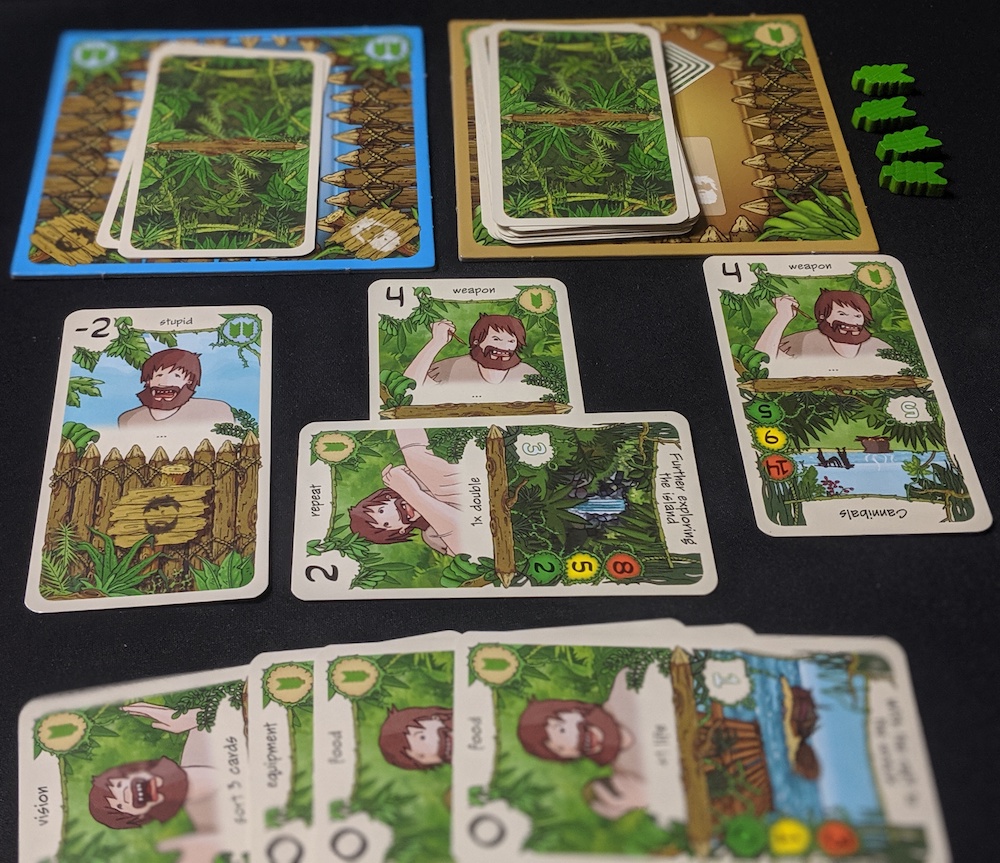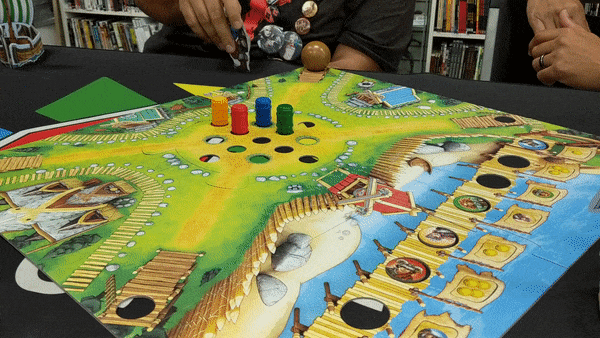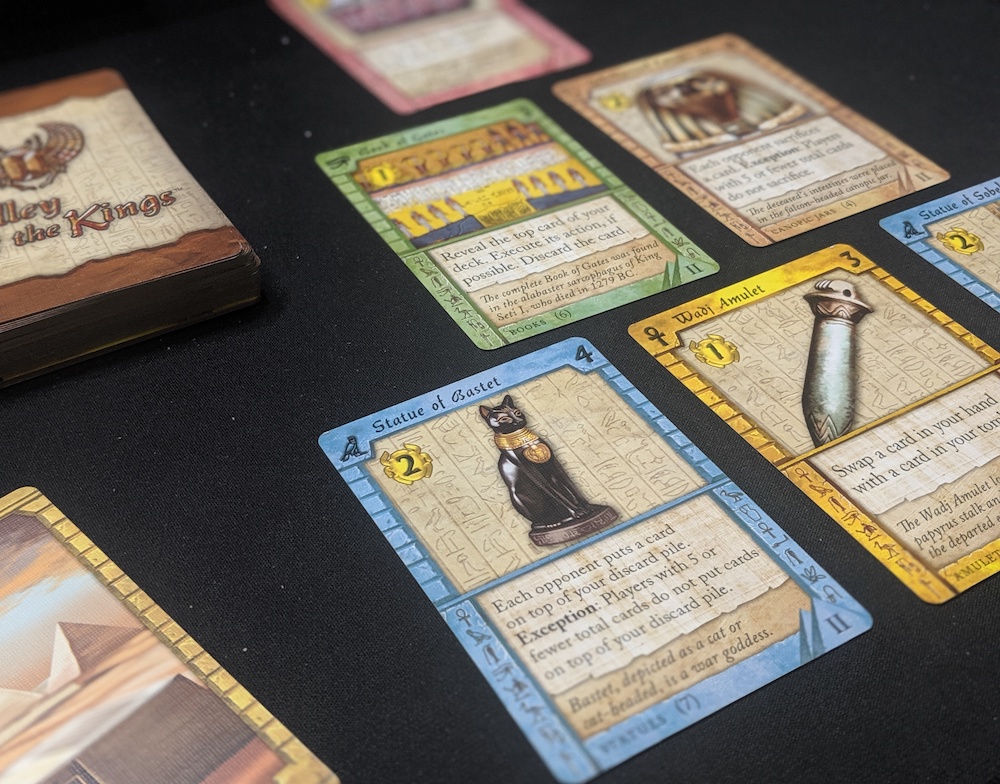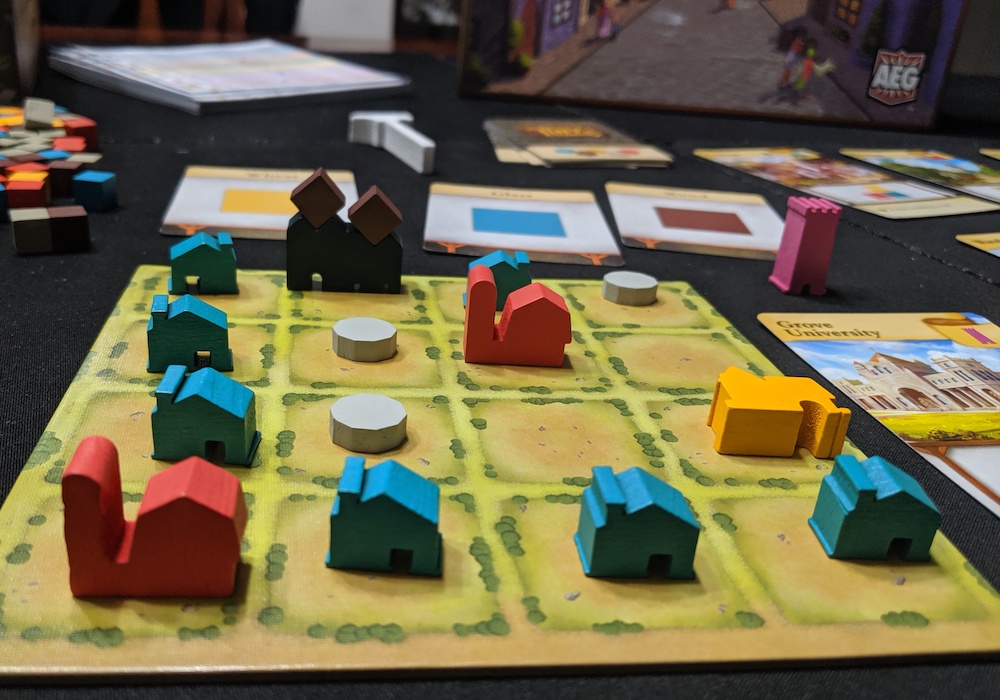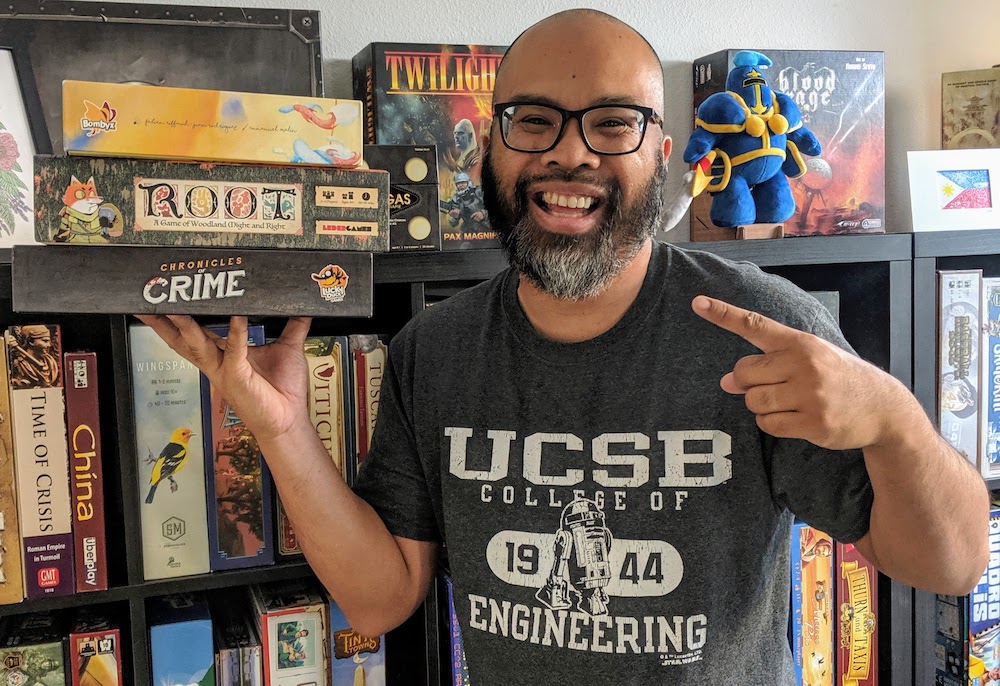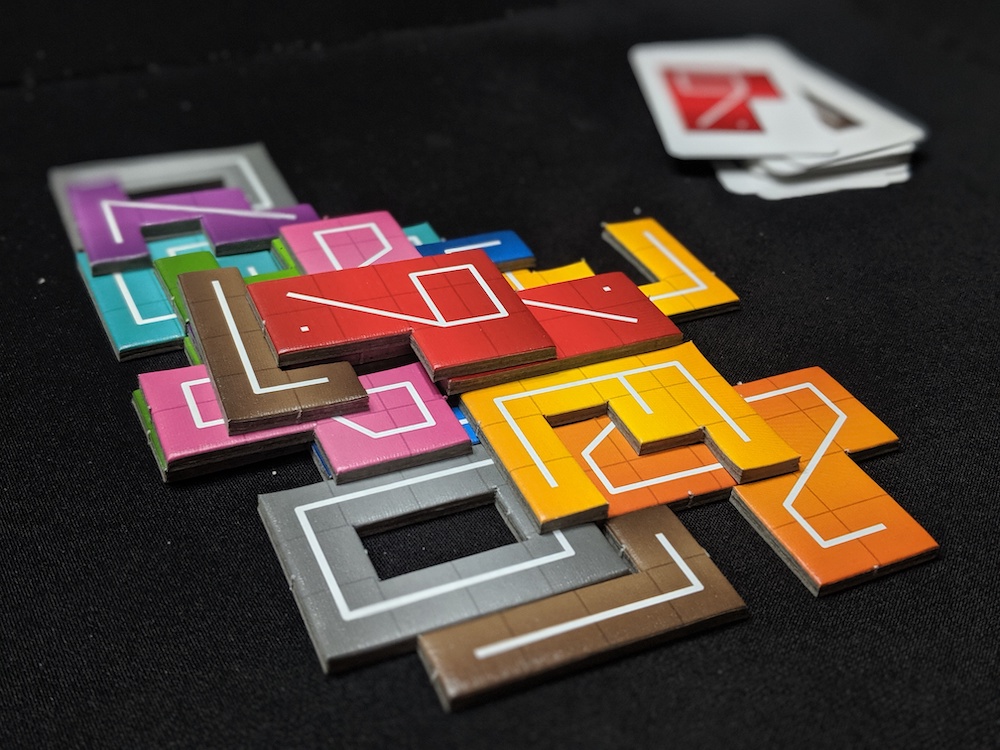I’m posting about a game every day in September! Here’s a link to yesterday’s post.

I’m not much of a video gamer these days so I miss out on all of the hotness, console gaming and otherwise. I do play the occasional video game app even though I prefer board game adaptations. Jetpack Joyride is my type of no-brainer video game app: it has a throwback feel to it, with its side-scrolling ’80s game play and the simple Flappy Bird-ish mechanism where you guide your jetpacker by tapping on the screen.
Seeing Jetpack Joyride translated into board game form immediately had me curious. How do you capture that sensation of floating through the labs while capturing coins for points and gadgets for special abilities while avoiding hazards?
Lucky Duck Games took the basic premise of Jetpack Joyride and turned it into an engaging puzzle with real-time action. Note: I’m saving my full review until I’ve played the multi-player game a few times so here’s a quick look at the solo game, which I had a blast playing today.
You draw four random lab cards, with each featuring several icons: coins for points and zappers, missiles, and lasers that cost you points during the score phase. There are five different polyomino tiles (think Tetris) that you’ll use to guide your little dude through the lab. The tiles are translucent so you’ll see what you’ve covered up. Cover a coin and it’s a point, but cover one of the hazards and you lose three points.
Like the multi-player game, the solo mode is played over three rounds where you try to escape the lab using your tiles by placing them one at a time orthogonally adjacent to the previous one. It sounds easy and it would be if that were the only goal. But there are three random mission cards drawn each round to give you extra points. So, you might get extra points for collecting all the coins in one sector, by not covering up any one of the scientists, etc.
At the end of each round you’re given a choice of gadgets that help you in the later rounds. For example, you can use Coin Magnet to collect coins that you missed, as long as they’re orthogonally adjacent to your tile.
I like that there are over a dozen gadgets to choose from, along with over a dozen missions to guide you and a stack of double-sided lab cards to keep things fresh over several plays.
So far the solo game is a hit with me. Instead of the tension created by the real-time Space Trucker-like tile grab, the solo game gives you a limited amount of tiles to work with. Once you’ve completed a round, the tiles are out of the game, unlike the multi-player rules. I am looking forward to playing in multi-player, though, since the real-time puzzle-solving sounds fun and intense.

